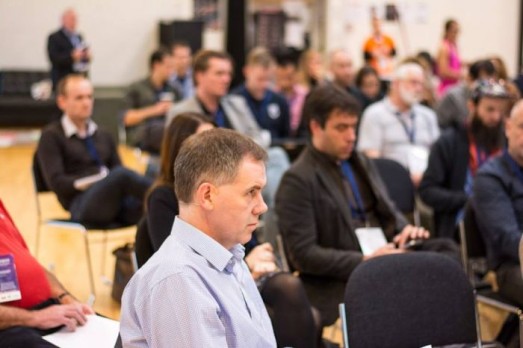Defying the “inferiority complex” in physical activity advocacy
10/11/2015

The plenary session of the MOVE Congress 2015 on 6 November aimed to connect the data with the doers in physical activity promotion. In other words, grassroots stakeholders in physical activity are the mobilisers who can deliver compelling data to policy-makers, provide the solutions and ultimately make a difference. But often they are lacking the confidence and the right approach to get through.
These were the key messages presented by experienced researchers and advocators from the Centre for Economics and Business Research (Cebr), ISCA, the European Cyclists’ Federation (ECF), DGI from Denmark and UBAE from Spain.
“What is a good advocacy strategy?” ISCA Secretary General Jacob Schouenborg asked at the start of the ‘Using Data as an Advocacy Tool’ extended workshop.
“I don’t think one size fits all,” was his answer.
But getting a grasp of the problem physical activity promoters want (and can help) to solve is an important way to start building a convincing case, Vicky Pryce (pictured above), the lead author of ISCA and Cebr's recent study, the 'Economic Cost of Physical Inactivity in Europe’, said.
She offered this report as one of many examples of new research that frames the problem in different contexts, giving compelling figures and messages such as ‘physical inactivity is costing Europe €80.4 billion per year’ and ‘500,000 people on the continent are dying each year from inactivity-related conditions’.
But, Pryce pointed out, “physical inactivity doesn’t get the attention it deserves. Sitting is the new smoking and society has been very slow to understand that.”

“Inferiority complex”
The way to help society understand the magnitude of the problem and do something about it is often though civil society’s decision-makers, and the speakers outlined how they can be approached at a local/community (UBAE’s Toni Llop), national level (DGI’s Søren Riiskjær) and international level (ECF’s Kevin Mayne).
That means becoming an “insider” and meeting the decision-makers face-to-face, Mayne (pictured above) said.
“If we want to make a difference, we have to be inside the process. It is essential to align ourselves, the NGO world… with industry and with governments. Then we’ll have a chance to go along the same track,” he said.
However, he added, “too many NGOs have an inferiority complex.”
Therefore, recognising they have solutions to one of society’s most widespread problems, grassroots organisations promoting physical activity “need to feel like they’re on equal footing when they walk into a room” with those they wish to influence, he said.
The media is another important link in the advocacy chain, Riiskjær pointed out, and that is where physical activity advocates should be amplifying their messages.
“Very few sports journalists are interested in sports policy, but there are some,” Riiskjær said.
“If the message is not communicated, it simply doesn’t exist… The media define the agenda… Politicians only relate to the reality in the media.”
But less is more, both Riiskjær and Schouenborg warned, advising civil society’s advocators to be professional in their approach, selective in where they pitch their work and not to bombard the industry or government representative with too much information at once.
“It’s not about telling and chatting about a number of messages. It’s about telling one message,” Schouenborg said.
Don’t forget the end target group
Llop turned the focus away from the “Big Boys and Girls” at the top of the sport and physical activity sector and emphasised the value of creating partnerships at a community level, particularly between grassroots sport organisations and municipalities, to offer people tangible opportunities to participate.
“We have to be focused on the participants,” he said. “Data is a tool, but we have to be focused on them [the target group].”
And making a clear distinction between sport for all and sport for the elite is the most important part of your “elevator speech”, ISCA President Mogens Kirkeby said.
“Sport for all is the sport you don’t see on TV,” he noted. It’s a clear message, it can be said in less than 20 seconds and it brings your target group into the spotlight. And it’s your job as an advocator to spread it.
Visit the official MOVE Congress website at http://www.movecongress.com/
By Rachel Payne, ISCA
Photos by Rachel Payne and Georgi Lazarov
Posted on 10/11/2015 by Rachel Payne, ISCA

